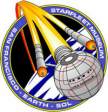 |
 |
Sozvezdie Class and Constellation Class
![]() Overview
Overview![]()
![]() Scenes
Scenes![]()
 3D scene created by Andrew Hall |
 3D scene created by Andrew Hall |
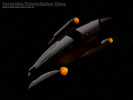 3D scene created by Andrew Hall |
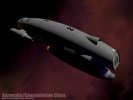 3D scene created by Andrew Hall |
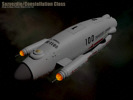 3D scene created by Andrew Hall |
![]() History
History![]()
Sozvezdie transports, which served for decades with numerous civilian passenger and freight lines and with Starfleet as the Constellation class, introduced high-speed, long-range matter/antimatter (M/AM)-powered civilian transport to the Federation. However, after the Earth-Romulan War there were many obstacles to widespread civilian use of M/AM-powered ships.
Obstacles to Civilian M/AM Use
Although M/AM technology had been available for civilian use in the United Federation of Planets (UFP) since 2161, by 2170 less than 15% of commercial cargo was carried by M/AM-powered UFP-registered ships. Several factors, including economic, social, technical and political factors, were responsible for the slow commercial adoption of M/AM drives.
One important factor was the immaturity of interstellar commerce. Because of the extremely long duration and high cost of fusion-powered interstellar transport before the Earth-Romulan War, there was surprisingly little trade between the United Earth (UE), Tellar, Andor, and Vulcan, the entities that would later found the UFP. In 2155, the last full year of peace before the start of the war, only 36% of the value of the UE's good and services were consumed outside of the Sol system. Of this amount, 77% was consumed internally, i.e., by colonies of the UE receiving shipments from Earth or by Earth colonies trading with each other, and only 23% went to non-UE systems.
Furthermore, the trade was extremely asymmetrical. Because of its high cost and long duration, high-speed interstellar transport was economically justified for only high-value manufactured goods, such as logic and communication systems; air, ground, or space vehicles; manufacturing equipment; chemicals reagents and pharmaceuticals; medical supplies and devices; and luxury items. Lower-value commodities, such as mineral ores, agricultural products, and bulk chemicals were either produced and consumed in-system or were shipped at lower speeds (usually barely above wf 1), often by means of robotic cargo trains. Ships that had carried high-value manufactured goods from the Sol system to UE colony worlds often returned with their holds nearly empty: the Inner Planets of the Sol system were still able to obtain abundant supplies of minerals ores from the seemingly inexhaustible asteroid belt and had little interest in purchasing manufactured goods from alien worlds.
A second, related factor was the poor development of interstellar passenger services. Again, the long duration and cost of interstellar travel with fusion-powered ships meant that most passenger travel was one-way and outward from the Sol system or between colony worlds. With fusion-powered ships traveling in 5-ly legs of 150 days each, a voyage to distant UE colonies in 2155 might require 5 years or more in hibernation. Most colonists making such journeys did not expect to return to Earth anytime soon. Although new M/AM drives available immediately after the war doubled cruising speeds (from wf 2.3, to wf 2.9) the 4.3-ly Earth-Centauri run still required more than 2 months. The duration of journeys along the longer routes now possible was, of course, even greater, as long as 6 months for the trip from Earth to Andor or Tellar. In addition to requiring a significant investment of time, a journey to another star system required a significant monetary investment: in 2161 the average cost of a second-class ticket to Alpha Centauri on an M/AM-powered starliner was 2,500 credits, equal to half the yearly average salary in the Sol system. For interstellar travel to become more popular, its speed must increase even as its cost decreased.
A third factor was the enormous costs of owning and operating ships. A new M/AM-powered cargo-carrying starship, such as a Gerson Wakusei IX or Rao Heavy Industries Chariot 6, could cost as much as 100 million credits, at a time when the average cost of a fusion-powered ship of similar displacement was slightly more than 60 million credits. On the other hand, the cost of converting a relatively new fusion-powered starship, such as the stalwart United States Rocket and Spacecraft Corporation (USRSC) Bison IV, to carry a new M/AM reactor built by NPO Energomash, Napier, or Westinghouse might cost 50 million credits or more, including labor, drydock fees, and the cost of the reactor itself. Such investments brought a doubling of speed and nearly unlimited range, but when fuel, maintenance, and reactor lifetime were factored in, the switch to M/AM increased by 30% the cost of transporting 1 kiloton of cargo a distance of 1 light-year.
A fourth factor slowing civilian adoption of M/AM travel was the lack of a supporting infrastructure. In 2161, antimatter was still produced at only a few facilities on Earth and Vulcan; therefore, to refuel ships had to return to central areas of the Federation, or antimatter had to be shipped to refueling centers in colonial areas. Owing to the inherent dangers of transporting the extremely unstable fuel, this latter option was not used until the late 2160s, by which time colonial antimatter production facilities were starting to be established. Therefore, before this time a ship operating exclusively among colonial star systems, such as the Libra worlds, would need to return to Earth for refueling every few years; such a return trip to Earth might take a year or longer. Furthermore, antimatter was much more expensive than deuterium to produce, store, and transport.
A fifth factor in the slow acceptance of M/AM was the shortage of engineers to run, repair, and maintain shipboard M/AM reactors. Then, as now, certification as an M/AM master engineer required 4 years of undergraduate study at a professional academy (such as national merchant mariner academies or Starfleet Academy) or 2 years of postgraduate study for a certified fusion engineer. Only after completing these studies could a candidate sit for the examination to obtain a M/AM reactor master's license; the failure rate for this test during the 2160s was 37%. Because of the engineer shortage, many companies were offering engineers bonuses worth many times their yearly salary to resign from Starfleet or to enter the private sector directly after graduation from the Starfleet Academy without fulfilling their service commitments. Starfleet, who operated more M/AM-powered starships than any other entity, was, of course, reluctant to lose any of its highly trained engineers. The competition among shipping lines to recruit and retain engineers was extremely fierce. Reactor masters were often the highest paid officers on civilian starships, earning on their first posting after graduation more than ship captains with 20 years' experience. Unable to secure certified engineers, some companies chose to operate their ships with uncertified engineers, which led, inevitably, to accidents causing the loss of several ships, along with their passengers, cargo, and crew.
A sixth factor in the slow commercial adoption of M/AM drives was concerns about the safety and reliability of M/AM reactors. Although the public recognized M/AM as an important reason for the UE-Andor alliance's victory over the Romulans during the recent war, concerns about its safety remained. This situation was not helped when, in 2165, 4 years after the end of the war, reports of catastrophic reactor failures aboard UESN combat vessels were revealed by the Earth government. During the war, these losses had officially been attributed to enemy action alone. The public rightly felt that it had been misled about the safety of M/AM reactors. True, the reactors had proven safer than predicted (the UESN Admiralty had been expecting to lose 1 of 15 ships per year through reactor accidents), but civilian ship losses due to M/AM explosions did continue to occur, albeit extremely rarely, which was still too often to reassure a skeptical and fearful public. A particularly spectacular accident occurred in July 2163 when SS Jupiter II, a Marx Monarch operated by the Three Planets Line, exploded on her maiden voyage as the reactor was powering up for warp speed just beyond the orbit of Luna. The explosion brought a false dawn to Earth's western hemisphere. More than 2500 lives were lost.
Together, these 6 factors helped ensure that customer demand for M/AM-powered transportation remained low in the early postwar period, at least at the speeds and costs then possible. With such low demand, many potential ship operators could not yet justify investing in reactor conversion, much less ordering new M/AM-powered ships. Only the largest, most financially sound firms, such as Centauri Spaceways and Alphaflettor, were likely to afford new ships or reactors. The new M/AM-powered ships were most often used along the shortest, highest-volume routes, such as Earth-Centauri run and among the Andorian homeworlds, where speed would be a commercial advantage, or for pioneering new routes to locations, such as the trans-Comae colonies, that had been poorly accessible with fusion-powered ships. However, most operators chose to wait until M/AM-powered travel became cheaper, faster, and simpler.
The Increasing Popularity of Small M/AM Ships
In 2162, Starfleet began to make veteran second- and third-generation M/AM-powered starships available to the civilian market for lease or outright sale. Although these ships had seen extensive wartime service with the UESN, their reactors had been thoroughly examined before decommissioning and were found to still be in good condition. The Comet and Powhatan light cruisers were converted to carry both passengers and freight and entered service with new interstellar courier services, such as Alphatel and Sendak Space Lines, as well as with established lines. When operated at 90% of maximum reactor output, civilian Powhatans could reach Alpha Centauri in 24 days, half the time needed by larger Bison or Olympus Mons transports. The newer Comets were even faster, reaching Alpha Centauri in 3 weeks or less.
For several years, high-speed travel between the Sol system and Alpha Centauri became something of a fashionable competitive sport for the wealthy classes of the Federation core. In one celebrated early case, one Miss Sachiko Kawasaki of Bartertown, Proxima Centauri IV, departed for Earth aboard the Comet HMS Hotspur of Imperial Spaceways on May 1, 2163. After arriving in the Sol system on May 20, she boarded a shuttle for San Francisco, where she purchased an extremely expensive Himalayan kitten born from two championship lines. She returned to orbit aboard the waiting shuttle, immediately boarded a second Comet, SS Sennen Hayabusa of the Transsolar Line, and arrived back in the Centauri system on June 8, only 38 days after leaving home. Although extremely expensive, these courier services were immediately successful and increased public demand for cheaper, higher-capacity passenger and freight services.
Kosmoflot and the Birth of Constellation
Kosmoflot had been long considered a dependable but technologically conservative company because of its origin as a state-owned passenger and freight air carrier on old Earth. Plaxico Kubelik, who had been Kosmoflot's chief executive officer (CEO) since 2122, had insisted that while M/AM could provide the military with extremely high short-term performance regardless of cost, civilian spaceflight required long-term reliability, sustainable costs, and, above all, safety, which could only be provided by fusion power. Before he died at age 122 in May 2168, Plaxico extracted a promise from his 41-year-old daughter Natalia, whom he had chosen to succeed him as CEO, that Kosmoflot would always operate a fusion-powered fleet, for the prosperity of the company, for the interests of their stockholders, and, most importantly, for the safety of their passengers. However, Natalia Kubelik, who had served in the UESN as chief engineer aboard the Powhatan-class light cruiser UES Minnesota (CEM-66) during the Earth-Romulan War, firmly believed that M/AM power was the future of civilian spaceflight. Within hours of Plaxico's death, she announced to the shaken board of directors, who had assembled at Kosmoflot headquarters in Gagaringrad, Mars, for her father's funeral, that their company would spearhead the design and construction of a radically new type of M/AM-powered starliner that would bring high-speed interstellar spaceflight to the masses and make Kosmoflot the Federation's premiere civilian passenger service. This new ship would be called Sozvezdie or, in English, Constellation.
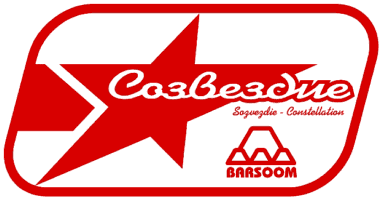
Natalia Kubelik believed M/AM-powered ships then available had several problems that might be addressed by her proposed Sozvezdie. One problem was speed. Although early postwar M/AM-powered cargo ships were twice as fast as prewar fusion-powered ships, she believed they still weren't fast enough. The difference between arriving at Alpha Centauri after traveling for 6 months or 3 months is, of course, considerable but carries little weight when one is deciding whether to make the journey at all: she maintained that a person unwilling to make a journey of 6 months would be similarly unwilling to make a journey of 3 months. On the other hand, if the decision to make the trip depended on the difference between spending 3 months in hibernation (plus the arduous preparation and recovery periods) and spending 3 weeks sipping piña coladas by a lagoon in a starliner's 4-story-tall tropical arboretum, the choice suddenly becomes much easier to make. Most early postwar civilian M/AM-powered cargo and passenger vessels resembled, to a greater or lesser degree, Bison transports built by USRSC. All ships had a roughly cylindrical hull, which was easier to construct and to adapt to different payloads and which maximized internal volume and payload. However, recent research suggested that such ships had inherent performance limitations that could not be exceeded even with more powerful reactors and warp-field-generating nacelles. The new hull shape of Kubelik's proposed Sozvezdie starliner would allow much greater speeds with reactors and nacelles of similar power.
Another problem Kubelik identified with current starliners was their excessive size. Most ship builders were operating under the old fusion-power paradigm that for a ship to operate at a given speed and range, a fixed percentage of a ship's fully loaded weight must be deuterium; accordingly, to transport larger payloads, ships simply needed to be scaled up. Because a ship's surface area, the main determinant of construction cost, increased as the square of ship length while a ship's volume and payload increased as the cube of length, larger ships were less expensive to build and operate, per kiloton of payload, than were smaller ships. Furthermore, several other costs, such as crew salaries, reactor maintenance and operation, navigation equipment, life-support, and embarked craft, were generally fixed regardless of ship size. For these reasons, fusion-powered starships and the early M/AM-powered ships derived from them tended to be very large. However, the advantages of a large ship quickly disappear if it leaves port less than fully loaded or has to wait for weeks to be filled. A ship that is not earning maximum revenue because of empty cargo holds or is not earning any revenue at all by sitting in port is in fact losing money for its operator through continuing fixed costs, such as crew salaries, taxes, port berthing fees, and equipment depreciation. As mentioned previously, the low demand for M/AM-powered interstellar transport at the speeds and ranges available did not justify such large ships. However, ship builders preferred larger ships because they brought in greater profits than did smaller ships. Natalia Kubelik's Sozvezdie would be smaller than existing starliners.
After hearing Kubelik's proposal and its estimated cost to Kosmoflot of 1 billion credits for 10 ships, several members of the board accused her of willfully dishonoring her father and attempting to destroy his legacy before his body had even become cold. They tried to oust her as CEO, but as an engineer and ex-UESN officer Kubelik had the support of Kosmoflot's senior flight officers, technical staff, and institutional stockholders, all of whom were excited by the prospects of the revolutionary Sozvezdie to energize Kosmoflot and advance interstellar civilian transport.
In June 2168 Kubelik made the rounds of leading starship builders in the Sol system to find a company to develop and construct her starliner. She proposed that of the estimated 3-billion-credit development cost, one-third would be borne by Kosmoflot, in the form of advance payment for the first 10 ships, and that two-thirds would be borne by the builder, who would then be able to sell the subsequent ships at whatever price the market would bear. However, every company Kubelik approached believed that developing such a radical starship would be financially impossible without the indirect subsidy of a Starfleet contract for a military version of the ship; they urged her to approach the Federation Council with such a proposal. However, being a former UESN officer herself, Natalia was well acquainted with the hazards of the military specification and procurement processes. Her greatest fear was loss of control over the Sozvezdie project, a possibly that was high if Starfleet became involved.
Barsoom Engineering Steps Up
After being turned down by every ship builder based in the Sol system, Kubelik had almost given up when she was approached by Barsoom Engineering, a company based on Aelita (Alpha Centauri IV). This company was young but well-respected, having had great success with small, innovative civilian ships, such as the Hellas Rambler and the Cydonia Ranger, but had never built a ship with even a third of the proposed displacement of Sozvezdie. However, Lincoln Bahadur, the president and CEO of Barsoom, who was, like Kubelik, a UESN veteran and a Mars native, came to Kosmoflot headquarters and presented his case directly. He was confident that Barsoom had the engineering and manufacturing expertise to design and build the starliner Kubelik wanted. Furthermore, Bahadur was certain that a starliner smaller and faster than Bison would be extremely popular with passenger lines. In fact, he was so confident that Barsoom had been performing design studies of just such a ship for the past 3 years. He believed that the first ship of the new class could enter service in 2 years.
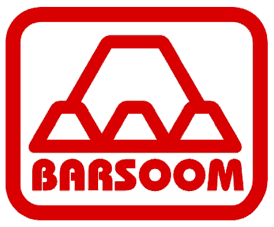
Lincoln Bahadur had been trying to sell starships to Starfleet for most of the last decade, but it had shown little interest in the smaller, faster ships he had been proposing. Starfleet seemed to believe at the time that transports need not be anywhere near as fast as military cruisers, In fact, a new class of extremely large transport vessels, the Ocean class, were already under construction at the USRSC yards above Texas. He saw Sozvezdie as Barsoom's chance to enter the first rank of starship builders, but from the civilian side.
Construction of Sozvezdie Starts... and Stops
Contracts between Kosmoflot and Barsoom were signed in November 2168 and called for the first unit to enter service in October 2170. By early May 2169, the basic layout and performance targets of Sozvezdie had been established to the satisfaction of both parties. Sozvezdie was to have a maximum speed of wf 4.4 and cruising speed of wf 4.0 sustainable for 25 ly and carry 490 passengers in two classes. The main hull of Sozvezdie was a gracefully tapered tube 213 meters long, 39 m deep, and 36 m wide at its thickest point. The bow ended in an 18-m-diameter housing for the main navigational deflector and forward sensors, while the stern ended bluntly with a 17.5-m-tall angled face containing the entrance to the main shuttlebay. Most of the forward and middle sections of the hull was for passenger cabins, pubic spaces, and entertainment facilities because passengers would remain awake for all or most of the voyage on routes Sozvezdie was expected to serve. In the rear of the ship was the M/AM reactor, a small cargo space, and the main shuttlebay. Outboard of the rear half of the ship on downward-angled supports were two 120-m-long Napier Super Lion I-B warp nacelles similar to those used in the Wasp class of 2174. The displacement was 180,000 tons.
Construction of the first Sozvezdie (Spaceframe #1) started in August 2169 at Barsoom's recently expanded orbital facility at Promixa IV and was nearing completion in December 2169. However, a major obstacle to the completion of Sozvezdie was, as is often the case with starships, the reactor. The high-output Tetsujin 3 reactor being designed for Sozvezdie by Tonkax Power of Proxima III was having serious problems. Although the reactor was to have been delivered for spaceframe mating in October 2169, the reactor was unlikely to be delivered until mid-2170, at the earliest. The greatest technical challenge in developing this reactor was that was Tetsujin 3 was intended to permit Sozvezdie to sustain a cruising speed (wf 4) that was 75% of its maximum speed of 85 c for upwards of 150 days. No civilian reactor manufactured in the UFP had ever been asked to provide this level of performance. It was no surprise, then, that the Tetsujin 3 reactor, which had been under development since 2167, had already exploded twice during maximal-output endurance testing at Tonkax's proving station on La Salle, a moon of Proxima VI.
In April 2170, a meeting of the project managers for the ship's major systems was held via subspace radio in the Centauri system and at Kosmoflot headquarters in Gagaringrad. Tonkax was forced to report that the Tetsujin 3 reactor would require at least an additional 6 months, until at least October 2170, before it would be ready to be mated to the waiting Spaceframe #1. Therefore, if other work on the spaceframe (such as systems integration and interior outfitting) continued while the reactor was being readied, the first Sozvezdie might still be able to enter service by April 2171, approximately 6 months behind schedule. Kosmoflot was willing to wait, but its patience was quickly reaching an end; it could ill afford to continue earning no revenue from its 1-billion-credit investment. Kosmoflot's board of directors, already opposed to the new ship, was forcefully pushing for Kosmoflot to cut its losses and cancel the entire program, and Kosmoflot's bankers on Earth were also urging that some action be taken.
The final straw came on August 7, 2170, when Tonkax announced that it would not be able to deliver the Tetsujin 3 reactor by October 2170 and forecast a new delivery date of March 2171. However, Tonkax was not confident it could meet even this new date. Therefore, Barsoom and Kosmoflot were forced to decide that the first Sozvezdies would be launched with a reactor other than the Tetsujin 3. The reactor chosen to replace it was the larger, less powerful Rama 5 introduced 2 years earlier by Jagannath Engineering in Mumbai. The Rama 5 was reliable, workmanlike, and, because it had been certified for passenger carriage, immediately available for delivery, installation, and use; however, because it was larger and less powerful than Tetsujin 3, Sozvezdie would have a lower maximum speed, a shorter range, and a smaller payload than had been hoped for. Still, even with the Rama V, Sozvezdie would be the fastest, most capable civilian passenger liner by a wide margin.
Sozvezdie Enters Service
Five Rama 5 reactors were loaded on a Kosmoflot Baby Bison and delivered to the Centauri system 45 days later. The first of the reactors was quickly installed in the waiting Spaceframe #1 and was powered up for the first time on October 2. As early static power tests of the reactor were consistent with Jagannath's projections, Spaceframe #1 was christened Yekaterina on October 15 and left the Barsoom spacedock under her own power.
As most of the final assembly and outfitting had been completed during the 1-year wait for her reactor, Yekaterina herself was quickly certified for civilian carriage and entered service with Kosmoflot carrying passengers and cargo on the Earth-Centauri run on March 1, 2171, only 6 months behind schedule. However, the Sozvezdie that was delivered was quite different from the Sozvezdie that had been planned. Although Kosmoflot had hoped for a cruising speed of wf 4 and a maximum speed of wf 4.4, the Rama 5-powered Sozvezdie could reach a cruising speed of "only" wf 3.7 and a maximum speed of wf 4.1. Still, Sozvezdie was more than twice as fast as the fastest M/AM-powered Bisons, the most common passenger liner in service on interstellar routes, and 54% faster than Starfleet's mammoth new Ocean-class transports.
The next 4 Rama 5-powered Sozvezdies (Sophia, Anastasia, Tatiana, and Nadezhda) entered service with Kosmoflot in the summer and fall of 2171 pioneering direct, nonstop service from Sol to Andor, Vulcan, Tellar, Gateway, Novaya Rossiya, and the Libra Colonies.
The long-awaited Tetsujin 3 reactor was finally delivered to the Barsoom shipyard in September 2171 and was immediately installed in Sozvezdie Spaceframe #6. Static testing showed that it was indeed a superlative powerplant: smooth, cool, and extremely responsive. Spaceframe #6 was christened Aleksandra and was certified to enter service with Kosmoflot on the Earth-Centauri run on New Year's Day 2172. On her maiden voyage, she arrived at Sol in only 18 days, 10 hours, and 12 minutes, besting by a full day the previous inbound record, set in 2165 by an ex-UESN Comet operated by Corsair Courier. Aleksandra was awarded the Blue Riband, the first ever held by a Kosmoflot starliner.
By 2175 more than 50 Sozvezdies had entered service with several passenger lines along all major routes. The high-speed service offered at fares much lower than those for the ex-UESN scouts Powhatan and Comet proved immediately popular. In 2175 alone, Sozvezdies carried nearly 300,000 passengers on interstellar voyages. To date, Sozvezdies had proven extremely safe and reliable, with no ships lost to reactor accidents. Passenger lines found that if they did not purchase and operate their own Sozvezdies, they quickly lost business to those that did. Unfortunately, because Barsoom could produce only 3 Sozvezdies a month, the wait for a Sozvezdie might be 5 years or more. However, other ship builders quickly introduced their own high-speed passenger liners, which rapidly increased the average speed of interstellar passenger transport.
In addition to the introduction of Sozvezdie, several other developments encouraged the growth of interstellar passenger travel. During the Earth-Romulan War, the threat of Romulan attack had brought the governments of Earth, Andor, and Vulcan closer together and led to the establishment of interstellar refueling stations and starbases to facilitate the movement of ships to defend against and, later, to attack the Romulan Star Empire. After the war, these facilities were used by civilian ships of the UFP for trade, passenger travel, and colonization. Furthermore, the UFP's "Space Lanes Initiative" of 2170 sought to link all major Federation territories with well-marked, well-patrolled spacelanes with facilities for refueling, rescue, and defense. The Federation also encouraged the expansion and establishment of schools to train M/AM reactor engineers and facilities to produce, store, transport, and dispense M/AM fuels. (See star chart, "Federation Core Systems, 2170".)
Sverh Sozvezdie (Super Constellation)
In February 2172, the fifth Sozvezdie to carry a Tetsujin 3 reactor entered service with Kosmoflot, thereby completing Kosmoflot's initial order of 10 ships, enough to allow biweekly Sozvezdie service in both directions on Kosmoflot's five most popular routes. However, rather than having a mixed fleet of Sozvezdies powered by Rama 5 reactors and Tetsujin 3 reactors, Kosmoflot would have preferred to convert all ships to carry the more powerful Tetsujin 3 reactor. However, doing so would have required withdrawing the Rama 5-powered ships from service, cutting open their hulls to extract the reactors, which were less than a year old, and replacing them with new Tetsujin 3 reactors. The difficulty of conversion suggested to both Barsoom and Kosmoflot that an easier method of changing reactors was needed. Furthermore, the rapid increases in reactor performance, achieved by the many civilian companies developing reactors since the end of the war, also meant that if Sozvezdies were to remain the fastest passenger liners in the Federation, they would need expensive reactor upgrades every 5 years or even more frequently, well before the natural lifetimes of the reactors warranted.
In 2175 Barsoom Engineering suggested that rather than placing the reactor within the hull, it could be carried beneath the hull in a single large pod, along with the Bussard ram scoop and the warp coils, which attached to the ship through a single umbilical. In effect, the pod would be a self-contained warp drive unit both powering and creating the subspace field to drive the ship. In this way the reactor and the warp coils could be easily upgraded without affecting the rest of the ship. Relocating the reactor to the "warp pod" would also free considerable space inside the hull for additional passenger spaces, cargo, deuterium, and equipment and be safer should the reactor need to be separated from the rest of the ship in an emergency. This new version of Sozvezdie would be called Sverh Sozvezdie (Super Constellation), and would begin production with Spaceframe #101 in 2177.
Because the reactor size was no longer limited by the need to maximize payload-carrying areas within the hull, Sverh Sozvezdie could use a larger more powerful reactor that allowed faster cruising and maximum speeds. The reactor most often used, the Nekko 251, pushed Sozvezdie to a maximum speed of wf 4.73 (105.8 c), making her the first civilian "century ship" that could reach 100 times the speed of light. This capability was proudly featured in all advertising for Sverh Sozvezdie. The supercruise mode, which sacrificed range for the sake of speed, allowed Sozvezdie to sustain a speed of 90% of maximum for at least 15 ly. The first Sverh Sozvezdie to enter service, SS Princess of Mars of the Centauri Line, won the Blue Riband on her maiden voyage by reaching Earth only 15 days, 3 hours, 8 minutes after leaving Alpha Centauri.
Starfleet Requests the Constellation Class
The ever-increasing capabilities of Sozvezdie had not escaped the attention of Starfleet. In 2168, Starfleet had explicitly rejected building a ship with the speed and range of Sozvezdie out of a desire to reassure any potential allies and rivals of the Federation's peaceful intentions. However, what had been considered prudently nonaggressive just a decade earlier was seen in 2180 as willfully and woefully inadequate either for protecting the Federation's frontiers or for simply moving personnel and materiel between Starfleet's increasingly distant installations throughout the Federation. Simply to keep pace with the rapid expansion of the territory controlled or settled by the Federation, Starfleet needed a much faster passenger and transport ship as a complement to the recently introduced but relatively slow Ocean class.
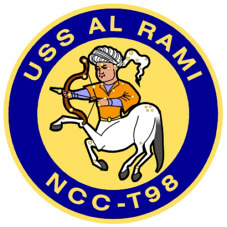
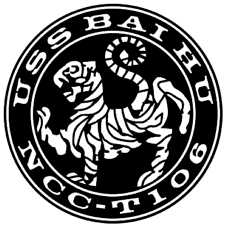
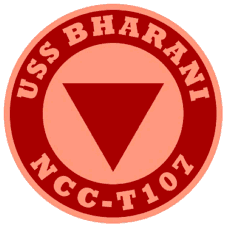
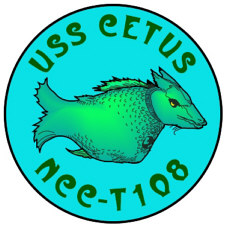

Accordingly, Starfleet approached Barsoom to develop a new variant of Sverh Sozvezdie that could carry both passengers and cargo. The main problem was that Barsoom's production facilities were still building ships that had been ordered 5 years previously. It could not hope to deliver a new class of 50 military cargo transports anytime soon. Therefore, Barsoom decided to allow the Sverh Sozvezdie to be built under license at Starfleet's Proxima Centauri Yards and Brooklyn Yards.
Unlike previous versions of the Sverh Sozvezdie, the new military Constellation class used a more powerful SSWR-III-G military reactor that had not been certified for civilian use. This reactor allowed Constellations to have a cruising speed of wf 4.8 and maximum speed of wf 5.1. In addition to the main nacelle buried in the warp pod, small twin nacelles were placed outboard of the nose to improve maneuverability at warp speed. A third impulse thrust emitter was added on the dorsal midline to improve maneuverability at sublight speeds. Two large dorsal shuttlebays with attached cargo handling and storage bays replaced the upper common passenger areas. Constellation could carry 525 passengers and crew and 3,074 standard cargo modules.
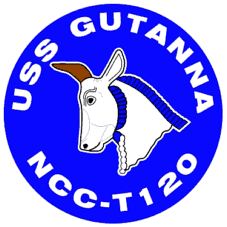
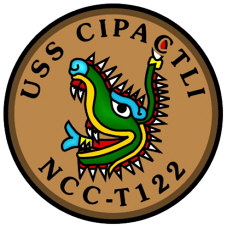
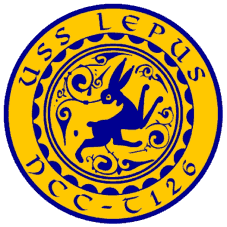
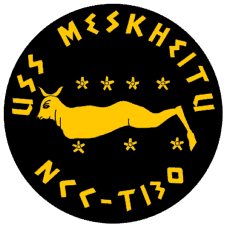
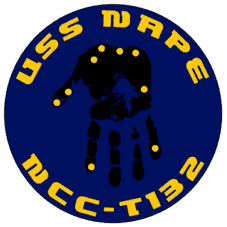
The 50 Constellation-class ships entered service with Starfleet's Transport Command from 2182 through 2187 and were retired from service in the 2240s. Most ships had uneventful careers. However, USS Ardra (NCC-T101) and USS Aries (NCC-T102) were assigned to the Starfleet Marines and converted to carry troopers, heavy landing boats, vehicles, and equipment for planetary assaults. These ships proved useful and led to the development of the later Belleau Wood class of assault transports from the Valley Forge-class cruisers.
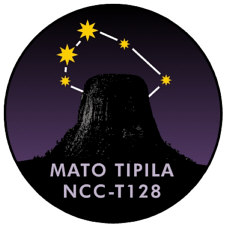
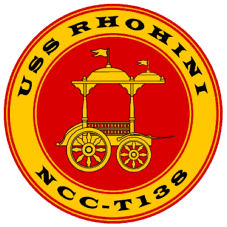

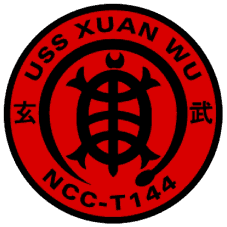
Sverh Sozvezdie Civilian Freighter
The final variant of Sozvezdie was the civilian Sverh Sozvezdie freighter introduced in 2185. As the new age of high-speed civilian passenger transport pioneered by Sozvezdie entered its second decade, freight and cargo lines also expressed a desire to upgrade their fleets. For the last 25 years, small quantities of cargo had been carried at high cost by small couriers, most often converted ex-military cruisers, but their limited size made such transport economically unfeasible except for the highest-value commodities. Most other cargo was carried by Bisons, Oceans, and other large but relatively slow ships. As Sozvezdies and similar ships began to set new standards for civilian transport, the high-speed delivery of more and more commodities began to be seen as desirable and, eventually, imperative. By 2185, while only 10% of interstellar cargo by weight in the UFP was carried at speeds exceeding wf 3, fully 50% of cargo by value was carried at such speeds.
For the new freighter version of Sverh Sozvezdie the upper half of the central hull was converted to a cargo bay for 7,932 containers (8 m³ each) which was accessed by 4 airlocks for ventral-docking heavy cargo shuttles. The ventral hull contained storage tanks for 27,700 m³ of liquid cargo, most often high-value engineered fluids for lubrication, hydraulic, cryogenic, or high-heat applications, which was still manufactured only in core areas of the Federation. Alternatively, the ventral hull could be used as additional space for container cargo (for a total of 11,400 containers) or as an open bay for bulk cargo loaded through belly clamshell doors.
USS Cepheus (NCC-T111), a Constellation-class transport that served with Starfleet's Transport Command for 53 years, has been returned to its original configuration and is on display at the Starfleet Museum.
![]() Commissioned Ships
Commissioned Ships![]()
|
Al Awwa NCC-T96 Al Jabbar NCC-T97 Al Rami NCC-T98 Andromeda NCC-T99 Aquarius NCC-T100 Ardra NCC-T101 Aries NCC-T102 Ashlesha NCC-T103 Ashvini NCC-T104 Auriga NCC-T105 Bái Hǔ NCC-T106 Bharani NCC-T107 Bushgali NCC-T108 Cassiopeia NCC-T109 Centaurus NCC-T110 Cepheus NCC-T111 Cetus NCC-T112 Chitra NCC-T113 Cipactli NCC-T114 Cygnus NCC-T115 Draco NCC-T116 Eridanus NCC-T117 Gemini NCC-T118 Girtab NCC-T119 Gutanna NCC-T120 |
Hasta NCC-T121 |
![]() Sozvezdie Passenger Liner*
Sozvezdie Passenger Liner*![]()
Standard displacement: 180,000 t
| Overall | 1° Hull | 2° Hull | Nacelles | |
| Length [m] | 222.56 | 212.54 | - | 110.90 |
| Beam [m] | 73.89 | 40.92 | - | 15.33 |
| Draft [m] | 49.37 | 47.25 | - | 15.33 |
Crew complement: 200 (8 officers + 192 crew)
Passenger capacity: 490 passengers in 317 cabins
Cargo capacity: 630 containers
Embarked craft: 8 medium cargo/personnel shuttlecraft
Warp drive: Tetsujin 3 spherical cavity M/AM reactor with 2 Super Lion I-B nacelles
Velocity: wf 4.0, cruise; wf 4.3, supercruise; wf 4.4, maximum
Range: 15.9ly
* Upgraded configuration
![]() Sverh Sozvezdie
Passenger Liner*
Sverh Sozvezdie
Passenger Liner*![]()
Standard displacement: 201,000 t
| Overall | 1° Hull | 2° Hull | Nacelles | |
| Length [m] | 212.54 | 212.54 | - | 125.95 |
| Beam [m] | 40.92 | 40.92 | - | 27.63 |
| Draft [m] | 70.22 | 47.25 | - | 27.63 |
Passenger capacity: 490 passengers in 323 cabins
Cargo capacity: 852 containers
Embarked craft: 8 medium cargo/personnel shuttlecraft
Warp drive: Nekko 251 spherical cavity M/AM reactor with 1 Bento-G nacelle
Velocity: wf 4.4, cruise; wf 4.6, supercruise; wf 4.7, maximum
Range: 26.4 ly
* Type A2 warp pod configuration
![]() Constellation-Class Military Cargo Liner
Constellation-Class Military Cargo Liner
![]()
Standard displacement: 197,000 t
| Overall | 1° Hull | 2° Hull | Nacelles | |
| Length [m] | 214.04 | 212.54 | - | 128.07/61.22 |
| Beam [m] | 73.89 | 43.04 | - | 22.71/11.70 |
| Draft [m] | 72.81 | 40.00 | - | 22.71/11.70 |
Crew complement: 125 (12 officers + 113 crew)
Passenger capacity: 375 military passengers in 237 cabins
Cargo capacity: 3,879 containers
Embarked craft: 8 medium cargo/personnel shuttlecraft, 2 heavy cargo shuttlecraft
Warp drive: SSWR-III-G spherical cavity M/AM reactor with 1 Caravan VI nacelle and 2 Cyclone directional nacelles
Velocity: wf 4.8, cruise; wf 4.9, supercruise; wf 5.1, maximum
Range: 27.9 ly
Units commissioned: 50
![]() Sverh Sozvezdie Civilian Freighter
Sverh Sozvezdie Civilian Freighter
![]()
Standard displacement: 198,000 t
| Overall | 1° Hull | 2° Hull | Nacelles | |
| Length [m] | 214.04 | 212.54 | - | 119.94 |
| Beam [m] | 40.92 | 40.92 | - | 22.05 |
| Draft [m] | 64.08 | 47.25 | - | 20.25 |
Crew complement: 75
Passenger capacity: 375 military passengers in 237 cabins
Cargo capacity: 7,392 containers + 27,700 m^3 bulk liquid or 11,020 containers or 101,500 m^3 bulk cargo
Embarked craft: 4 medium cargo/personnel shuttlecraft, 4 heavy cargo shuttlecraft
Warp drive: Tetsujin 6 spherical cavity M/AM reactor with 1 Caravan VII nacelle
Velocity: wf 4.8, cruise; wf 4.9, supercruise; wf 5.1, maximum
Range: 26.8
![]()